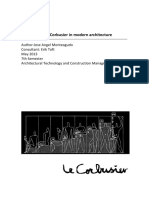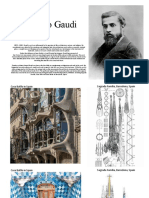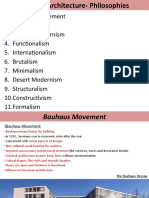INTERNATIONAL STYLE
"International Style" describes a type of design that developed mainly in Germany, Holland and France,
during the 1920s, before spreading to America in the 1930s, where it became the dominant tendency
in American architecture during the middle decades of the 20th century.
The International Style grew out of three phenomena that confronted architects in the late 19th century:
(1) architects’ increasing dissatisfaction with the continued use in stylistically eclectic buildings of a mix of
decorative elements from different architectural periods and styles that bore little or no relation to the
building’s functions, (2) the economical creation of large numbers of office buildings and other
commercial, residential, and civic structures that served a rapidly industrializing society, and (3) the
development of new building technologies centering on the use of iron and steel, reinforced concrete,
and glass.
In 1932, historian Henry-Russell Hitchcock and architect Philip Johnson presented an exhibition and
companion book at the Museum of Modern Art in New York that chronicled contemporary European
architecture. The “International Style” exhibition coined the style name and introduced these radically
modern buildings to an American audience.
Hitchcock and Johnson laid out three key design principles of the International Style:
1) Architecture as volume – thin planes or surfaces create the building’s form
2) Regularity in the facade, as opposed to building symmetry
3) No applied ornament
Characteristics
- rectilinear forms;
- light, taut plane surfaces
- open interior spaces;
- the use of cantilever construction
- glass and steel, with usually less visible reinforced concrete
The International Style grew out of the work of a small group of brilliant and original architects in the
1920s who went on to achieve great influence in their field. These major figures included Walter
Gropius and Ludwig Mies van der Rohe in Germany and the United States, J.J.P. Oud in the
Netherlands, Le Corbusier in France, and Richard Neutra and Philip Johnson in the United States.
1. Walter Gropius - was the founder of the renowned Bauhaus design school in Weimar, Dessau and
Berlin.
2. J.J.P Oud - Jacobus Johannes Pieter Oud, co-founder of the De Stijlmovement with Theo van
Doesburg (1883-1931); his elegant and geometrical International Style included the Bio-Children's
Convalescent Home (1960) near Arnhem
3. Le Corbusier - Charles Edouard Jeanneret, one of the greatest architects of the 20th century,
simplified architecture down to its main functional features: window, ramp, stair and column; his
best known work is the Villa Savoye (1930)
4. Richard Neutra - gained worldwide recognition as an advocate of modern design. In the United
States, he had a strong influence on architecture, particularly in California. His design for the Lovell
� (Health) House (1929), Los Angeles, with balconies suspended by steel cables from the roof frame,
was, in retrospect, one of the most important works of his career.
5. Ludwig Mies van der Rohe - the third and final head of the Bauhaus school, emigrated to Chicago
in 1938, where he became director of architecture at the Armour Institute in Chicago. He
specializes glass and steel skycrapers like his famous Seagram building in New York.
6. Philip Johnson - as an architectural historian, he helped introduce modern architecture – the
glass box - to America with a book and exhibit on the International Style at the Museum of
Modern Art in New York. He became Johnson the architect, and built what is perhaps the
country's most famous modern house, the Glass House (1949), his own residence in New
Canaan, Connecticut.
REFERENCES
http://www.visual-arts-cork.com/architecture/international-style.htm
https://www.britannica.com/art/International-Style-architecture
http://www.architecture.org/learn/resources/architecture-dictionary/entry/international-style/

























































































